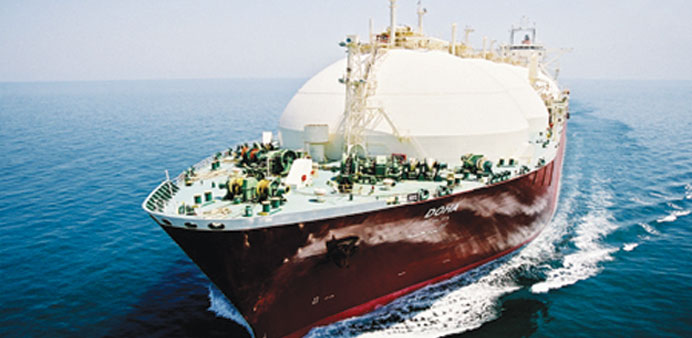Majority of gas exports are under long-term contracts, which provides some certainty regarding the volumes sold. S&P expects that Qatar will maintain its cost advantage over many new projects in other countries
Standard & Poor’s Ratings Services has affirmed its ‘AA’ long-term and ‘A-1+’ short-term foreign and local currency sovereign credit ratings on Qatar. The outlook is stable.
In a statement issued yesterday S&P said, “Qatar is a wealthy economy; we estimate its GDP per capita at $81,000 in 2015. The hydrocarbons sector creates about 55% of Qatar’s GDP, 90% of government revenues (oil and gas taxes and royalties, plus dividends from Qatar Petroleum), and 85% of exports. We view Qatar’s economy as undiversified.”
Qatar’s economy grew by about 6% over the last three years, but S&P expects growth to slow to about 4% during 2015-2018. The hydrocarbon sector will likely continue to stagnate.
The non-oil sector, on the other hand, should remain buoyant, thanks to public investment and supported by the growing population.
“We understand that the government is committed to the large public infrastructure programme and its efforts to diversify the economy, while maintaining its strategic position in the global natural gas market.
“In our view, medium-to-long-term challenges to Qatar’s competitive position in the liquefied natural gas (LNG) market are likely to come from new shale production, Russia’s gas pipeline to China, and increased pressure to delink LNG contracts from the price of oil.”
Nevertheless, Qatar’s strategy has been to diversify into all major markets, adjusting the mix of destinations and contract types according to market needs. Moreover, the majority of its gas exports are under long-term contracts, which provides some certainty regarding the volumes sold.
S&P also expects that Qatar will maintain its cost advantage over many new projects in other countries. Since Qatar produces and exports significant quantities of condensate and natural gas liquids associated with natural gas, its effective average cost of producing LNG is much lower.
S&P assumes that Qatar’s oil production will decline as output from maturing fields contracts. It expects an average annual decline in crude oil production of about 5% over 2015-2018. S&P projects largely flat gas output (LNG and natural gas), given Qatar’s moratorium on new investments in the sector, while condensate volumes will likely increase by about 5% per year over the same period.
“Our outlook assumes that public spending will continue as the investment program advances. We also project a decline in hydrocarbon income, namely the financial transfers from Qatar Petroleum to the budget, which come to the government budget with a lag,” S&P said.
According to S&P, the government intends to rationalise and outsource part of its operations and to award more projects to the private sector, though whether the desired level of private sector participation can be achieved remains to be seen, in its view.
In the context of lower hydrocarbon revenues and increasing capital spending, the government is prioritising existing projects, focusing funding on the highest-priority and strategic investments. “We expect national development strategy projects to improve the economy’s productive capacity and strengthen Qatar’s competitive position,” S&P said.
“The stable outlook reflects our view of balanced risks to the ratings over the next two years. We believe that Qatar’s economy will remain resilient, supported by strong macroeconomic fundamentals, but we also anticipate continued institutional weaknesses and limited monetary flexibility over the next two years,” S&P said.

